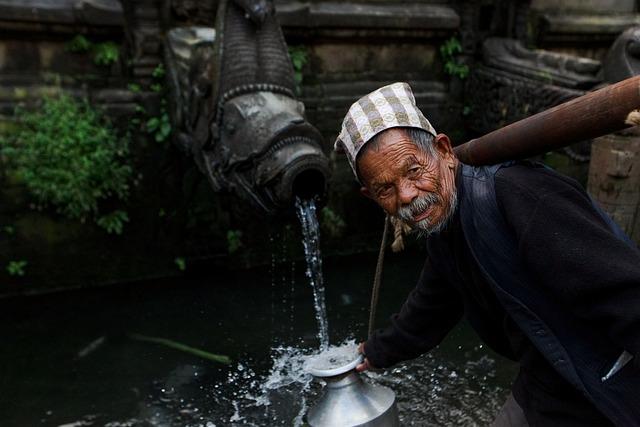Hey there! Have you ever wondered why certain traditions, languages, or even foods feel so unique in different parts of the world? A lot of that richness and diversity actually traces back to colonial history. Even though those colonial days might seem far behind us, their impact still ripples through local cultures today-in subtle ways and sometimes in bold, surprising forms. In this post, we’re going to take a friendly dive into how colonial history helped shape the vibrant, complex cultures we see around the globe now. Get ready to see the past coming alive in the present!
Table of Contents
- The Lasting Impact of Language and Communication
- Unpacking Traditions and Customs Influenced by Colonial Rule
- How Colonial Architecture Continues to Define Local Landscapes
- Practical Steps to Preserve and Celebrate Indigenous Heritage
- Key Takeaways
The Lasting Impact of Language and Communication
Language and communication have been powerful tools in shaping cultural identities, often acting as bridges or barriers between communities. During colonial times, imposed languages did more than just replace native tongues; they redefined social structures and access to resources. Today, remnants of these historical shifts are visible in the way local dialects evolve, interweave, or sometimes fade away entirely. This cultural blend is evident not only in vocabulary but also in storytelling traditions, educational systems, and even in the humor and expressions people use daily.
Several lasting effects stand out:
- Hybrid Languages: Creole and pidgin languages, born out of necessity, reflect a unique blend of indigenous and colonial influences that continue to thrive in many regions.
- Communication Styles: The rhythm, tone, and gestures of speech often carry colonial legacies, influencing how communities interact across generations.
- Literature and Media: Stories, songs, and media content frequently navigate dual identities, blending traditional narratives with colonial perspectives to create rich, complex cultural tapestries.
Unpacking Traditions and Customs Influenced by Colonial Rule
Colonial rule left an indelible mark on local traditions and customs, often weaving together indigenous practices with foreign influences. For many communities, this blending created hybrid cultures where language, cuisine, clothing, and festivals reflect a tapestry of historical encounters. For example, the introduction of European languages as official tongues transformed communication patterns, while new agricultural crops and cooking methods enriched local diets. This cultural fusion often challenged traditional identities but also sparked vibrant new forms of expression that communities proudly preserve today.
Beyond tangible changes, colonial legacies continue to influence social norms and rituals that shape communal life. These adaptations reveal themselves in:
- Celebrations merging indigenous rituals with Christian holidays
- Architectural styles that combine local craftsmanship with colonial design
- Family structures affected by imposed legal systems and inheritance laws
- Educational traditions originally modeled on colonial curricula
Understanding these layered traditions encourages a richer appreciation of how resilience and adaptation emerged from a complex history, molding cultures that are both rooted and dynamic.
How Colonial Architecture Continues to Define Local Landscapes
Walking through many towns and cities, you’ll quickly notice the unmistakable charm of colonial architecture still gracing streets and neighborhoods. These buildings, constructed centuries ago, do more than just tell stories of the past-they actively shape the identity of the area today. Characterized by features like ornate wooden balconies, thick stucco walls, and colorful facades, these structures bring a unique aesthetic that blends historical significance with modern city life. Beyond their visual appeal, they influence everything from local zoning laws to tourism strategies, making them a cornerstone of cultural preservation and economic vitality.
Moreover, the impact of colonial design extends beyond buildings into the way communities organize public spaces and markets. The layout, often inspired by colonial town planning, fosters a sense of community and accessibility, highlighting:
- Central plazas that act as social hubs.
- Cobblestone streets that encourage pedestrian exploration.
- Mixed-use buildings that combine residential and commercial spaces seamlessly.
These elements collectively nurture a vibrant, walkable environment that is deeply rooted in history yet perfectly suited for contemporary urban living. This enduring architectural legacy provides a living link between past and present, continuing to define local landscapes in delightful and meaningful ways.
Practical Steps to Preserve and Celebrate Indigenous Heritage
Embracing Indigenous heritage starts with actively supporting local communities through meaningful engagement and respect. One vital approach is to participate in or organize cultural events that highlight traditional practices, stories, and art. These events help raise awareness and foster appreciation beyond mere acknowledgment, creating a lasting impact on how the heritage is perceived and preserved. Additionally, promoting Indigenous languages by incorporating them in schools, public spaces, and digital media strengthens cultural identity and ensures these languages thrive for future generations.
Another powerful way to honor Indigenous heritage is by supporting Indigenous-owned businesses and artisans who keep age-old crafts alive. This not only empowers communities economically but also helps sustain cultural traditions in a modern context. Communities can also create collaborative platforms where Indigenous voices lead conversations about their own history and future, ensuring authenticity and respect. Consider ways to educate yourself and others through books, documentaries, and workshops that explore Indigenous experiences beyond the colonial narrative.
- Attend Indigenous-led cultural workshops and festivals
- Support Indigenous entrepreneurs and artists
- Learn and use Indigenous place names
- Encourage local schools to integrate Indigenous history and languages
- Create platforms for Indigenous storytelling and perspectives
Key Takeaways
As we’ve seen, the echoes of colonial history still resonate in many aspects of local cultures today-from language and cuisine to traditions and social structures. Understanding this complex legacy helps us appreciate the rich, sometimes challenging, stories behind the cultures we encounter. By recognizing the past’s influence, we can better celebrate the diversity and resilience of communities around the world. Thanks for joining me on this journey through history-here’s to learning, growth, and deeper cultural connections!


